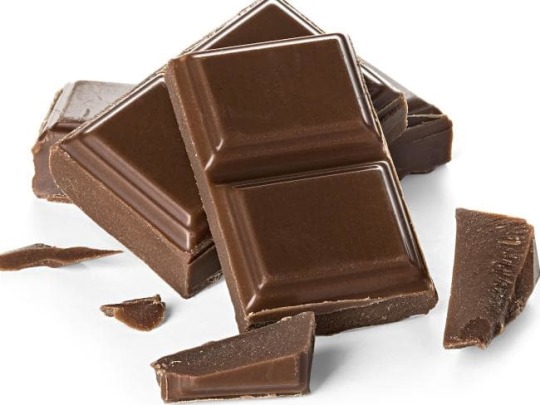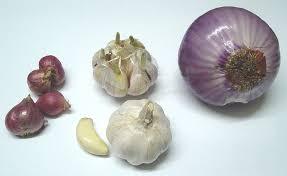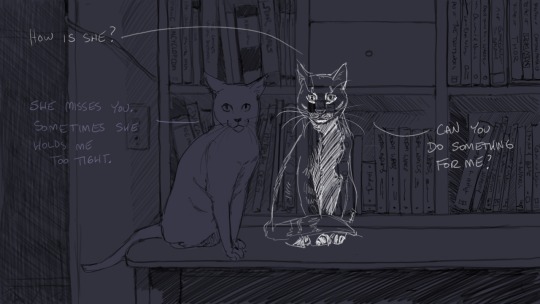~ Hello! Fourth year veterinary student here. This is my studyblr to keep me motivated in my studies and help me understand concepts. It is a work in progress as I study for NAVLE and continue learning during these next few years of my life. ~ * My avi is my precious, late babygirl who is my #inspo to keep going! *
Don't wanna be here? Send us removal request.
Text
Overheard in the Dentistry rounds room:
“If you can flick it, you can lick it.”
4 notes
·
View notes
Text
WHY you shouldn’t feed these 10 foods to your dog
Dogs might think they’re human, but their physiology is not like ours. Humans might eat a wide variety of foods with little concern, but there are some very common human foods which you should not feed to your canine companion. You’ve probably seen the foods on this list before, but this is WHY these foods should not be fed to dogs.

Chocolate, Theobromine and Caffeine:
Everybody’s heard that chocolate is bad for dogs, and it’s true. Chocolate contains a compound called Theobromine. Theobromine is a type of compound called a methylxanthine, and another methylxanthine you might be more familiar with is caffeine. We know quite a lot about these compounds, as humans use them both medicinally and recreationally. The long version is that they all inhibit phosphodiesterase and antagonise adenosine receptors. The short version is that they increase muscle activity, including the heart, and stimulate the central nervous system.
This presents as dogs that have fast and irregular heart rates, high body temperatures and increased muscle activity that can progress to seizures.
It takes a reasonable amount of chocolate to poison a dog. One M&M isn’t going to do it. For a 35kg dog it’s going to take at least 3500mg of theobromine, which is about 5kg of typical milk chocolate. But only 1.2kg of dark chocolate or 600g of cooking chocolate, which is possible.
A 10kg dog needs much less. 1.5kg of milk chocolate would do it, which is only about 3 large Easter Bunnies, or 300g of dark chocolate, which is one packet from the cooking isle.
Chocolate is super tasty, dogs will absolutely gorge themselves on all chocolate available, so it’s not too difficult to poison smaller dogs with it.
And even if you get the dog through the toxicity, the high fat content of chocolate can go on to cause other gastrointestinal problems.

Onions & Garlic:
Yes, I said onions AND garlic. All allium species contain the same potentially toxic compounds, whether raw or cooked. That goes for spring onions too, it’s just really difficult to convince a dog to eat enough of them to be poisoned. These plants cause a Heinz body anaemia by inducing oxidative damage to the surface of the red blood cells, and for some reason breeds of Japanese origin like the Akita and Shiba Inu seem particularly prone to this toxicity.
It usually takes 10 to 15g per kg of body weight to poison a dog, but those breeds can be affected by as little as 5g per kilo. So for a big, 35kg dog, that’s about three medium sized onions.
Poisoning can happen all in one go, or it can happen by eating small amounts over a longer period of time, which is why it’s infuriating to see garlic being suggested as a natural remedy for things.
Bad cases will have to be treated with a blood transfusion as there is no direct antidote. And for interest, there are other things that can cause Heinz body anaemia too, like zinc.
Keep reading
2K notes
·
View notes
Text
What You Don’t See
-What you see: A too young veterinarian that surely can’t be qualified to treat your animal.
-What you don’t see: A young veterinarian that busted her butt through 8 years of schooling and while she might not have the experience of a 60 year old veterinarian, she knows more than you think and she knows where to look for help if needed.
-What you see: A hospital and staff that are only in this for the money.
-What you don’t see: Multiple veterinary team members putting their heads together to create a treatment plan that is best for your pet but still fits in your budget. Multiple people searching through donated medications or secretly using a bag of fluids for free because your pet’s health is WAY more important than our production numbers.
-What you see: A far too long room wait time.
-What you don’t see: The plethora of other critical patients in the treatment room that are being managed at the same time as your pet. Timely examinations of all animals is important and we try to get to everyone as soon as possible. Unfortunately, the actively seizing dog, the cat who just coded, the respiratory distress rabbit, and the dog who just collapsed from an Addisonian crisis will need to be addressed before your dog’s ear infection of three months duration.
1K notes
·
View notes
Text
Epidemiology
AKA: THE Worst
NAVLE has strong ties with understanding the darned 2x2 table and all maths associated. Here’s a quick (and hopefully) simple guide to all things epi. This is all I reviewed in Epi and I passed.

Review. Re-write and MEMORIZE this table. If you don’t know it off the top of your head it cannot help you.
EQUATIONS:
PPV = A/A+B *if animal tests positive, they are truly positive
NPV = D/C+D *if animal tests negative, they DO NOT have the disease
Sensitivity = A/A+C *ability of the test to catch “true positives” ie/ those with the disease
Specificity = D/B+D *ability of the test to catch “true negatives” ie/ those without the disease
PRACTICE QUESTION
A new disease in iguanas has a 5% prevalence in the population. A new test designed to catch the disease has been found! The sensitivity of the test is 90% whereas the specificity is 95%. What is the positive predictive value of this test?
1) Chose a population size.
1,000
Now, you can chose any number here but best bet is to chose a large easy maths number. I go with 1000.
2) Prevalence of disease is 5%.
5% * 1,000 = 50
3) Add “knowns” into 2x2 table.



And taaaadaaa. That’s how you get a number out of what seems like nothing.
If anyone wants practice question or further explanation let me know and I can do another one.
13 notes
·
View notes
Text





Still hurts, but enough time’s passed for me to get out this bit of catharsis. I miss my kitty.
139K notes
·
View notes
Photo





Canine Dilated Cardiomyopathy
With help of ‘Common Diseases of Companion Animals’ by Alleice Summers
117 notes
·
View notes
Text
god how do people just function?!? its like i can either take care of my schoolwork OR keep my apartment clean OR look after my mental health OR have a social life… but never two or more at a time. no matter which aspect of my life is going well at a given moment, theres always 3 dumpster fires blazing away in the background. i feel like im playing adult whack-a-mole
117K notes
·
View notes
Text
“Everything is going online, tests are not proctored.... oh, and you’ll all have to come back a week or 2 early in the fall to make up labs” 😡
We're about to learn what happens when a vet school shuts down face to face instruction. The chaos that must be going on in the administrative conference room right now...

29 notes
·
View notes
Text
me, taking a nap to avoid all my responsibilities: I can have a little unconsciousness. as a treat.
68K notes
·
View notes
Photo

0 notes
Text
Interviewer: Give us your best tip for overcoming depression.
Stephen Fry: To regard it as being like the weather. It's not your responsibility that it's raining, but it is real when it rains, and the fact that it's raining does not mean that the rain is never going to stop. The only thing to do is to believe that, one day, it won't be raining and accept it so you can find a mental umbrella to shield yourself from the worst. The sun will eventually come up.
73K notes
·
View notes
Text
Idk if anyone is weird like me and has a favorite muscle but anyways mine is the semimembranosus
227 notes
·
View notes
Text
Essential Oils & Pets
So what’s the deal with essential oils?
They are everywhere, the current Big Thing. People think they can use them for everything - for food (ffs no), to revitalise their belly button, to treat their dog’s ear infection - and some people just think they smell nice.
They are marketed as natural, perfectly safe, little bottled miracles, but that’s really not accurate. Not all natural things are safe, and essential oils should be treated with care.
What is in an essential oil?
We all know, and have known for hundreds of years, that many plants have medicinal properties and before the invention of modern medicines humans did the best they could with what they had to heal themselves.
An essential oil is the concentrated essence (hence why it is called essential) of a plant. Plants obviously contain lots of different molecules - some structural, a lot of water, and those that are medicinal. Also many that are poisonous. The essential oil is only the volatile (evaporates into gas easily) oils (fats, do not dissolve in water).
The first problem here is that the essential oil of a plant may contain 500 or so different molecules, which all have different effects on the body. Some will be non-functional, some will be useful, and some will be harmful.
Their relative concentrations will also vary by the strain of the plant, the season it was harvested, and the health of the plant. The whole witchcraft thing of ‘only harvest these herbs under the full moon of the month of X’ could be legit, the contents of the plant will vary by the time of year.
Now, compare essential oils to modern drugs.
If you go to a pharmacist and you get a prescription, that medication will contain usually just one (though sometimes two or three) known active ingredients. And that product is labeled with its concentration, as well as the non-active ingredients (eg starch, glucose). The pharmacist could tell you with fairly little effort what its effects are, common side effects, uncommon side effects, off-label uses, other drug interactions, contraindications, duration of effect, etc. In short, we know modern medicines inside out.
The 500 or so compounds in a single type of essential oil? We know some of them. Just a few.
Now how many drugs are in a typical pharmacy. 500 different ones? Imagine taking one pill out of every single box in the pharmacy, grinding them up, and taking a big sniff. That’s like what essential oils are. The compounds in the essential oil are capable of doing something, but not all of those somethings are going to be good.
And that’s assuming it’s a pure essential oil, with no impurities or pesticide residues. (Note - no essential oil is just one type of molecule by definition. They’re all a blend of all the oils that come out of the plant.) With a generally unregulated product, that’s not a risk I’m super happy with.
How are they absorbed?
The universal recommendation for all reputable suppliers of essential oils is DON’T apply undiluted to skin. And don’t ever apply internally (don’t eat them). What do a bunch of 'natural therapy’ crackpots do? Advise people to apply directly to their or their pets skin. Don’t do that. Especially don’t do that with lavender oil which can cause skin ulceration.
These volatile oils evaporate very readily, but they will also dissolve across skin, across nasal membranes, and potentially across the blood-brain barrier. Once they are in the body, those hundreds of different, variable potential compounds could do all sorts of things to the body, including but not limited to liver failure and seizures.
You can’t dilute them with water either. They’re an oil, they don’t dissolve in water, only other oils.
Increased dangers for pets
Our household pets are at particular risk of Essential Oil toxicity for a number of reasons.
They are smaller than us. Their small size means the relative dose of these super-concentrated oils is much higher.
Their surface area to volume ratio is larger, so they can absorb more oils, and absorb them faster, than we do as large mammals. The smaller the animal, the more extreme this is.
Most pets have a sense of smell which is immensely superior to our own and can find essential oils distressing.
Cats have unique quirks in their liver metabolism pathways which means compounds which would be fine for every other mammal on the planet have an increased toxicity in cats
Birds have a different respiratory system to us (a series of air sacs connected to the lungs) which increases their surface area for absorption even more, which is why they’re so sensitive to gases.
Invertebrate pets may be directly harmed because lots of plants produce compounds to deter insects from eating them, and now those are concentrated in the oils. There is also the risk of pesticide residues.
How to use essential oils safely?
On your pets? Don’t. They’re too small and too easy to poison, and they can’t tell you if they’re starting to feel not-good, they’re dependent upon you noticing them being sick. Can you tell the difference between an animal who is ‘calm’ because they’re relaxed and one who is ‘calm’ because they’re feeling a bit unwell? Honestly?
You want to use them for yourself? Dilute them in other types of oils or soaps. You can’t dilute them in water, it has to be in oil. They can then be diffused into the air in a well ventilated space for a short period of time, 20 minutes or so, without pets present.
If you were intending to eat them, for some reason, stick to extracts instead. These are more dilute oils from the plants, and intended for human consumption. You can’t substitute an essential oil and an extract in a 1 to 1 ratio.
There’s a reasonable guide to human safety and risks here.
Alternatives?
The primary concern when dealing with essential oils is how sheer concentrated they are, so if you’re seeking alternatives, dilution is key.
If you’re only using them for the smell, real dried plants are an alternative for some common oils, as lavender and rose grow just about anywhere.
You could also consider using fragrance oils instead, which is what I use in soapmaking. They’re a combination of natural and synthetic compounds, already partially diluted, and only contain about 50 or so compounds instead of the 500 or so you might find in a natural essential oil.
Candles may be another option for some purposes, as the oils are already diluted in the wax, they’re not liquid so can’t be spilled on the pet, and still diffuse slowly into the air. Just use for 20 minutes or so at a time.
The key in all uses is diluting the oil and limiting the exposure time. Use it if you really think there’s a benefit for yourself, but be extremely cautious in using essential oils around pets.
So which oils are extra bad?
Essential oils are highly concentrated, potent compounds, so I’m never going to suggest that any are really 'safe’ for pets, but there are some that seem to be more toxic than others.
Eucalyptus (honestly, just assume any plant out of Australia is poisonous, okay?)
Tea tree / Manuka (another Aussie)
Clove
Cinnamon
Citruses
Melaleuca (Aussie again)
Lavender
Peppermint
Wintergreen
But this list is not exhaustive! Please check any you intend to use, and use them only with care, dilution and caution. And don’t try to eat them.
This post was viewed early by my wonderful Patreon supporters.
1K notes
·
View notes
Text
I wanna take a shower after that pharmacology final.... I feel so... violated. 😞
0 notes
Text
FFP or Cryoprecipitate
Fresh frozen plasma = fresh frozen factors (coagulation factors)
Cryoprecipitate has fibrinogen (Cryo Fibro)
4 notes
·
View notes
